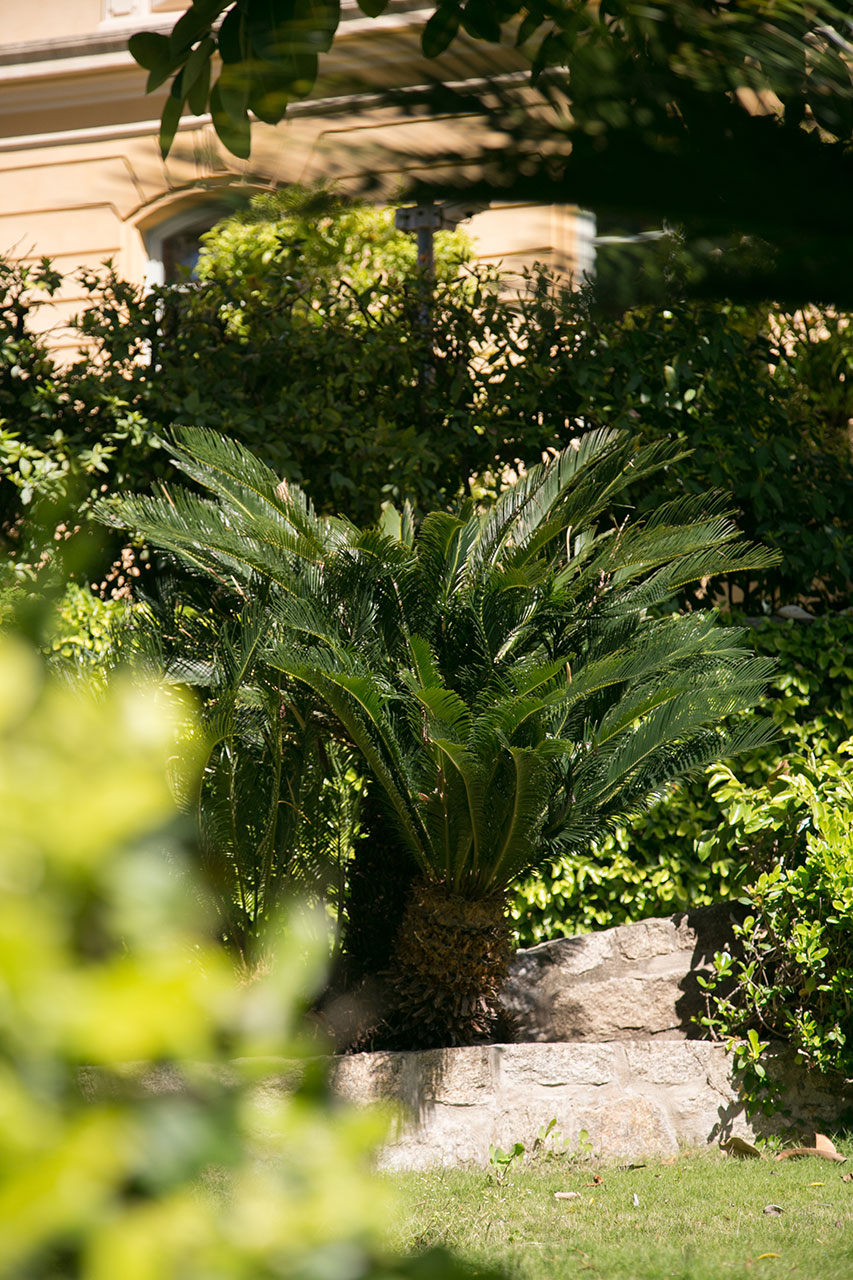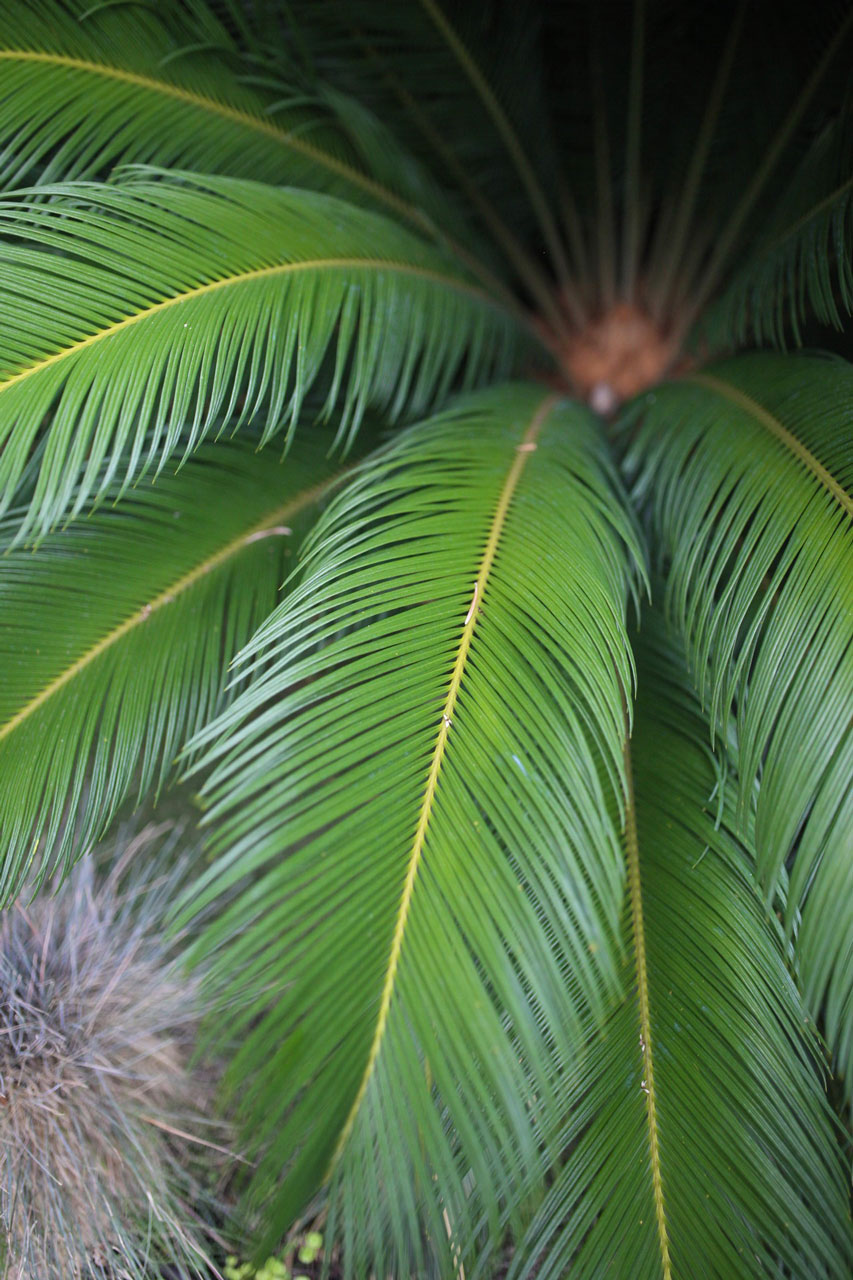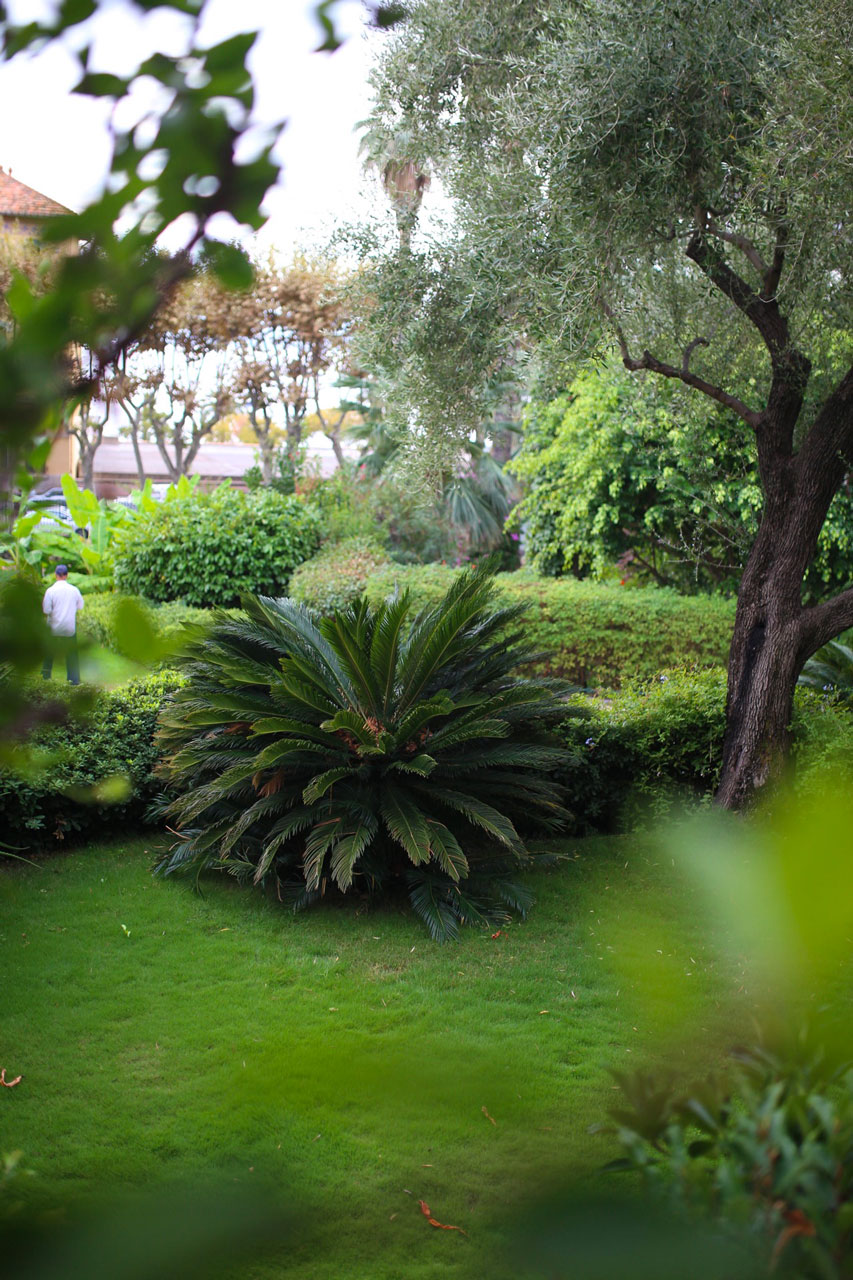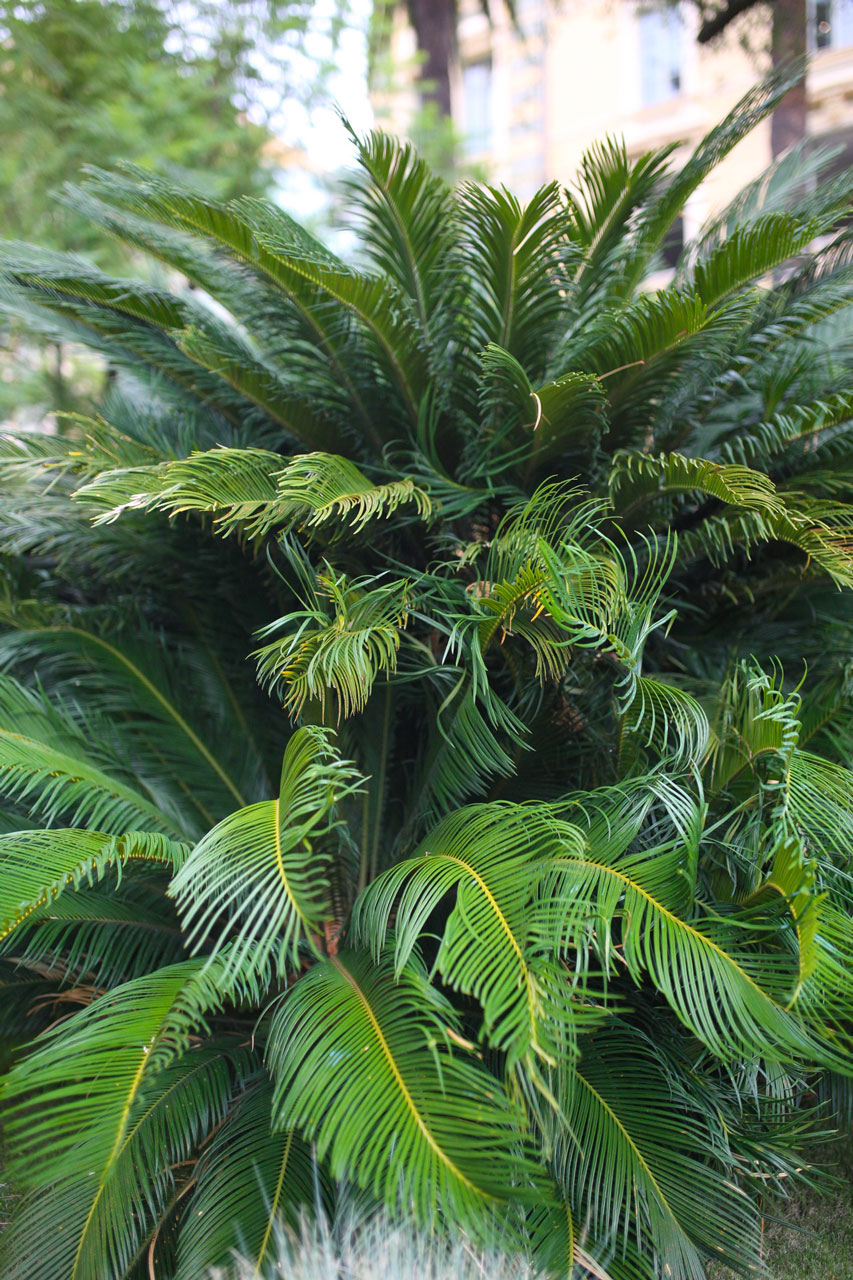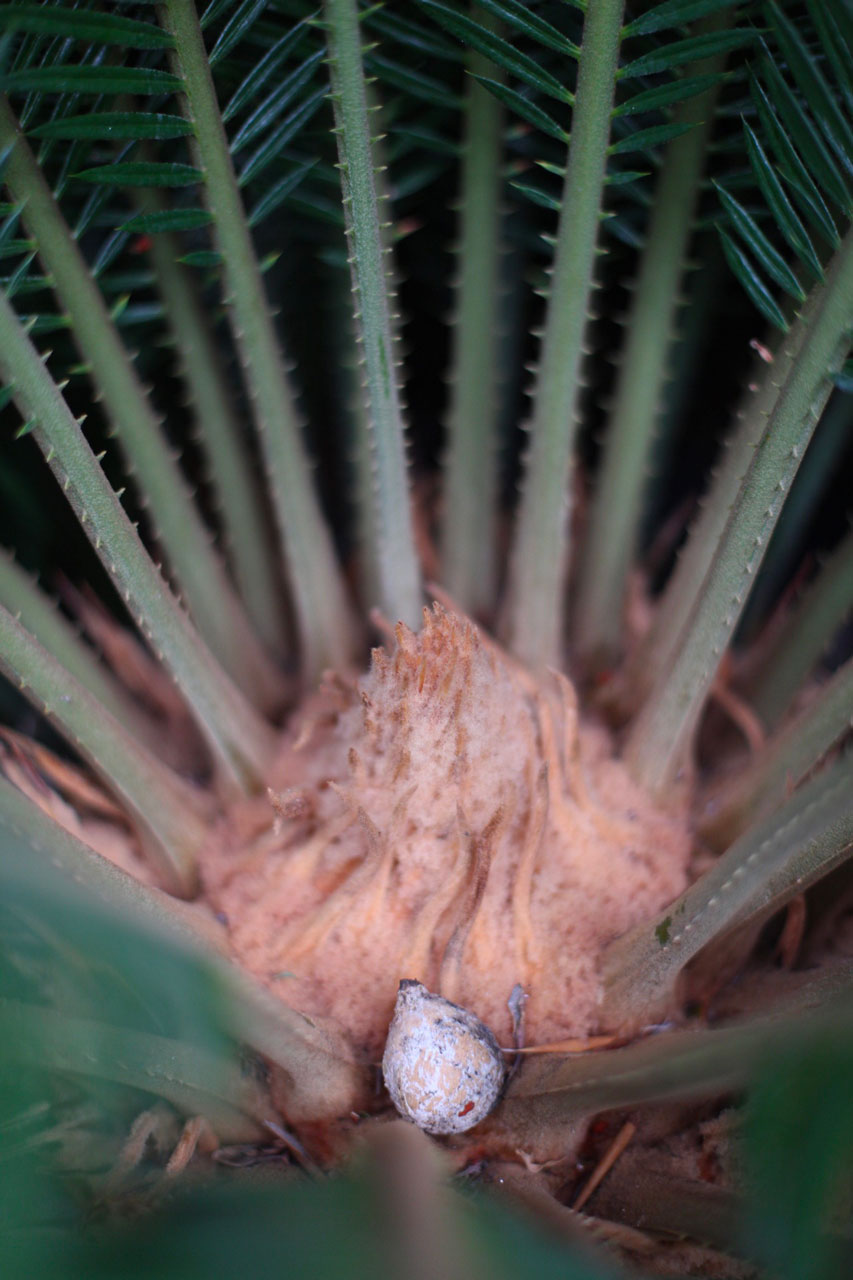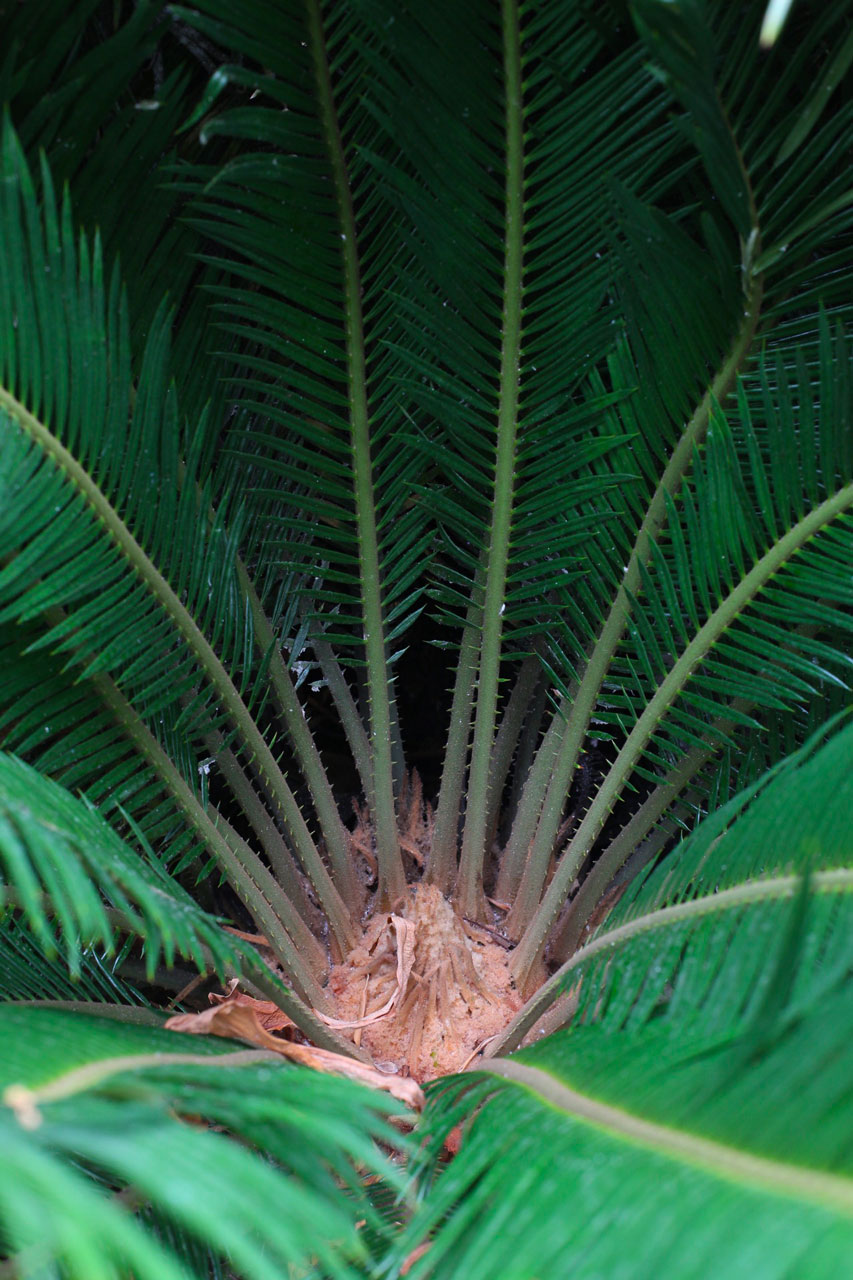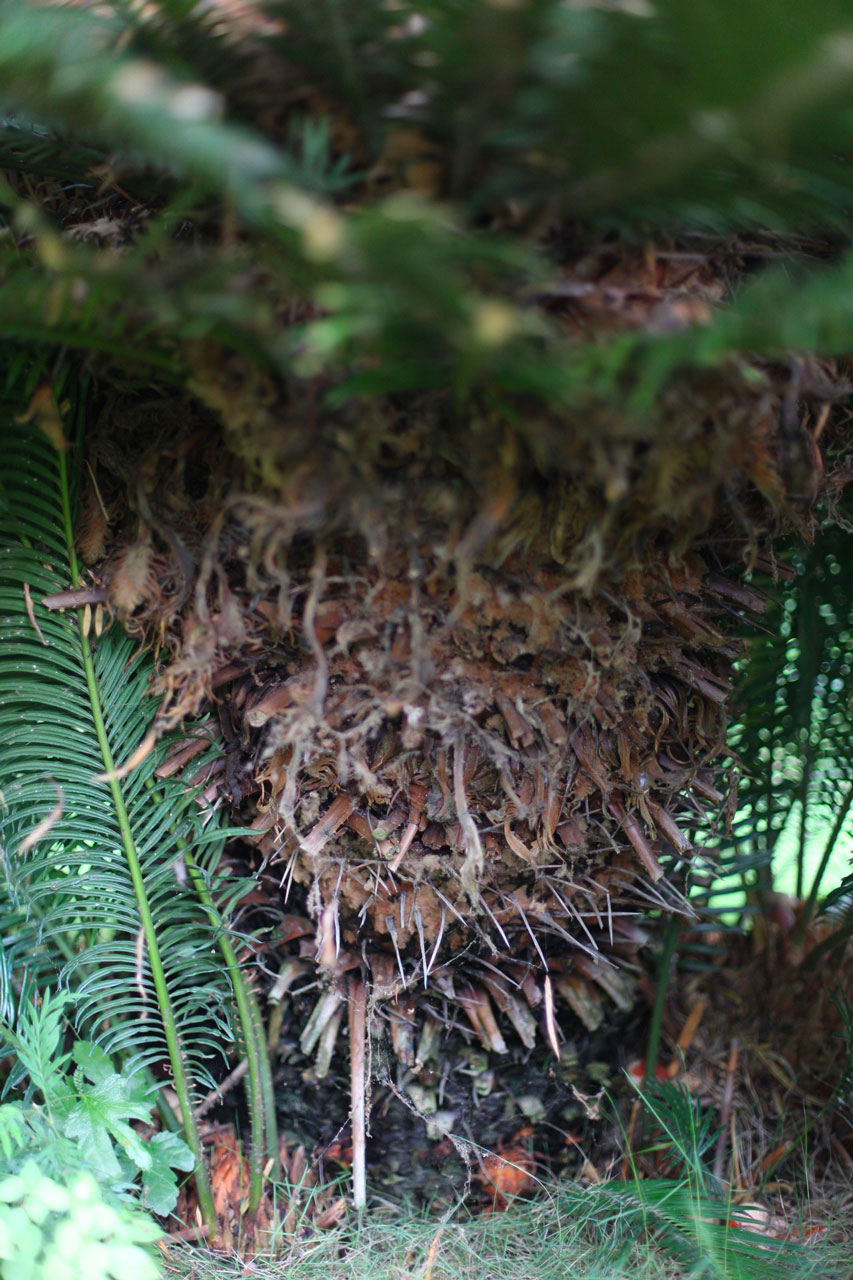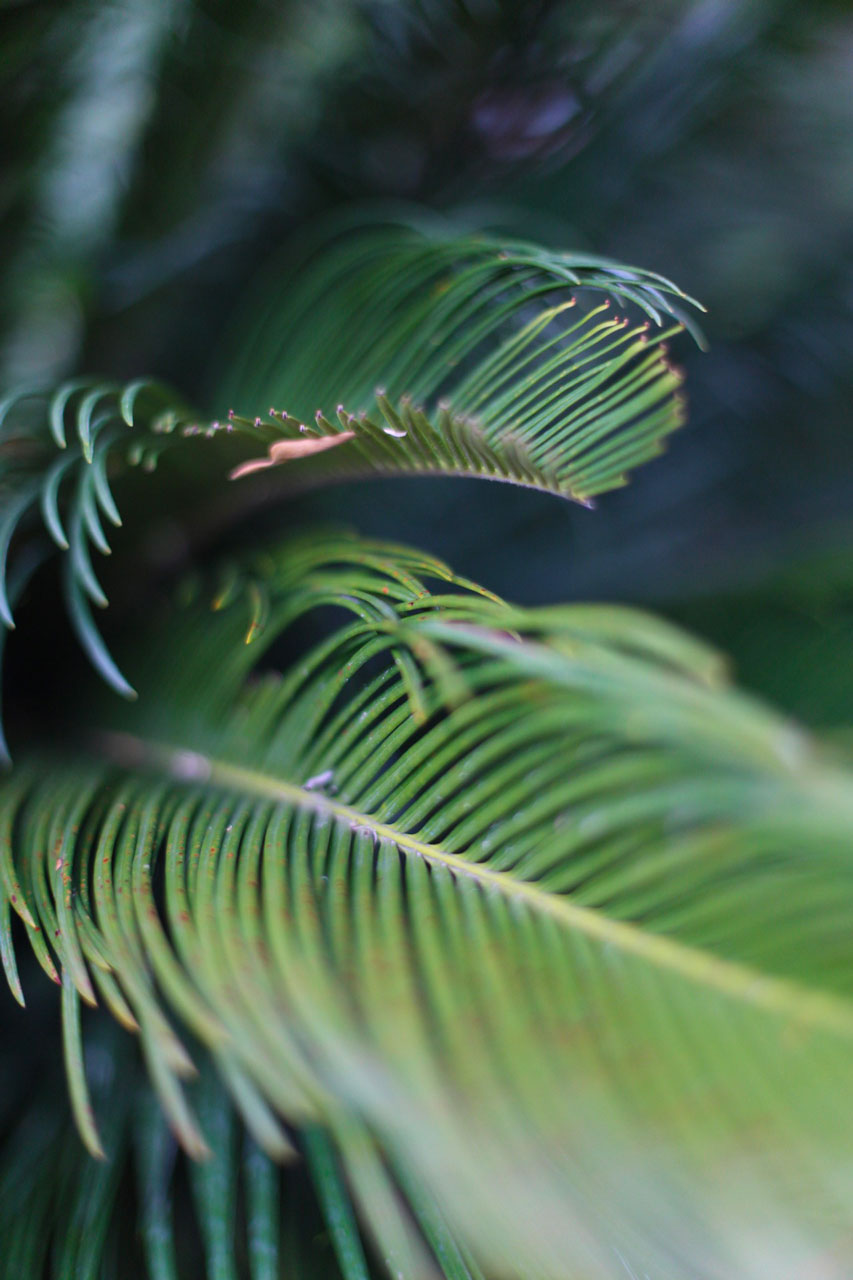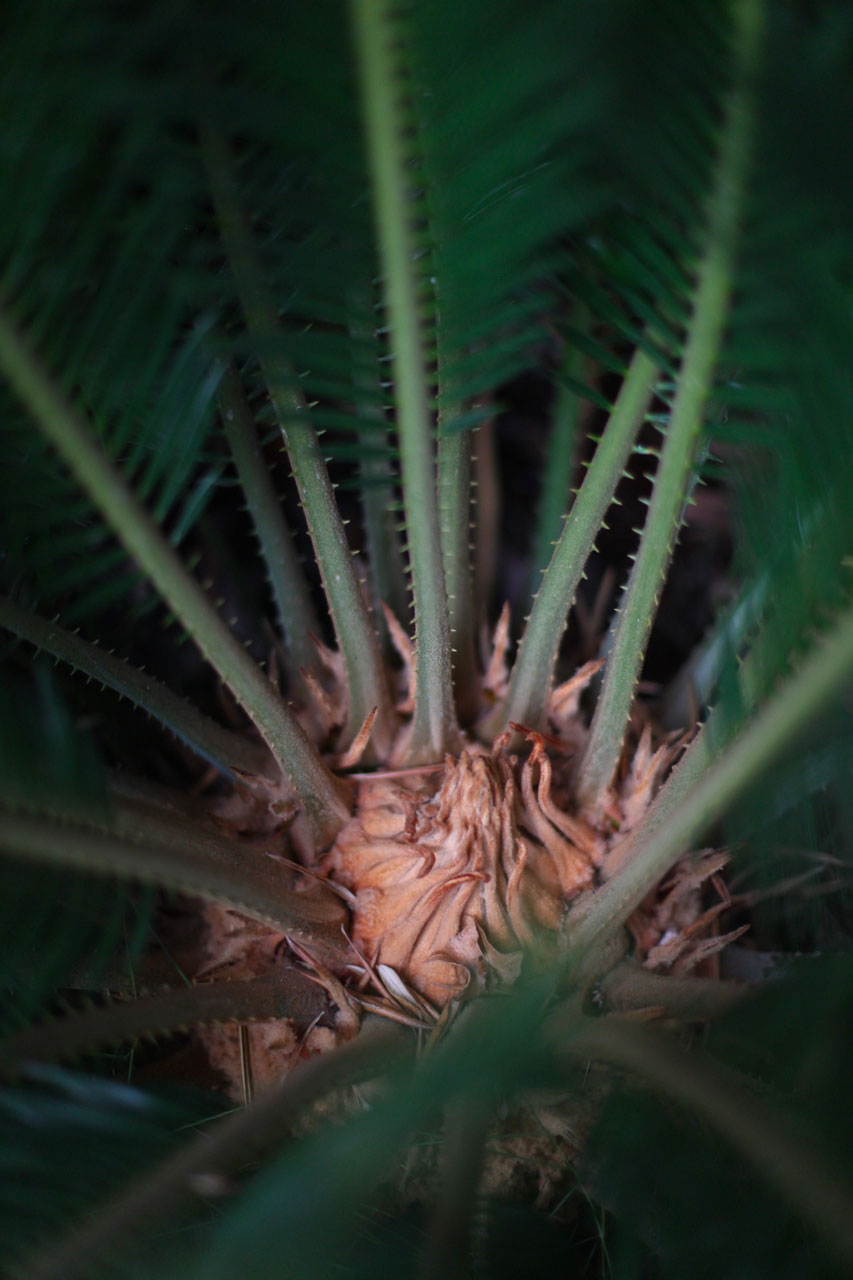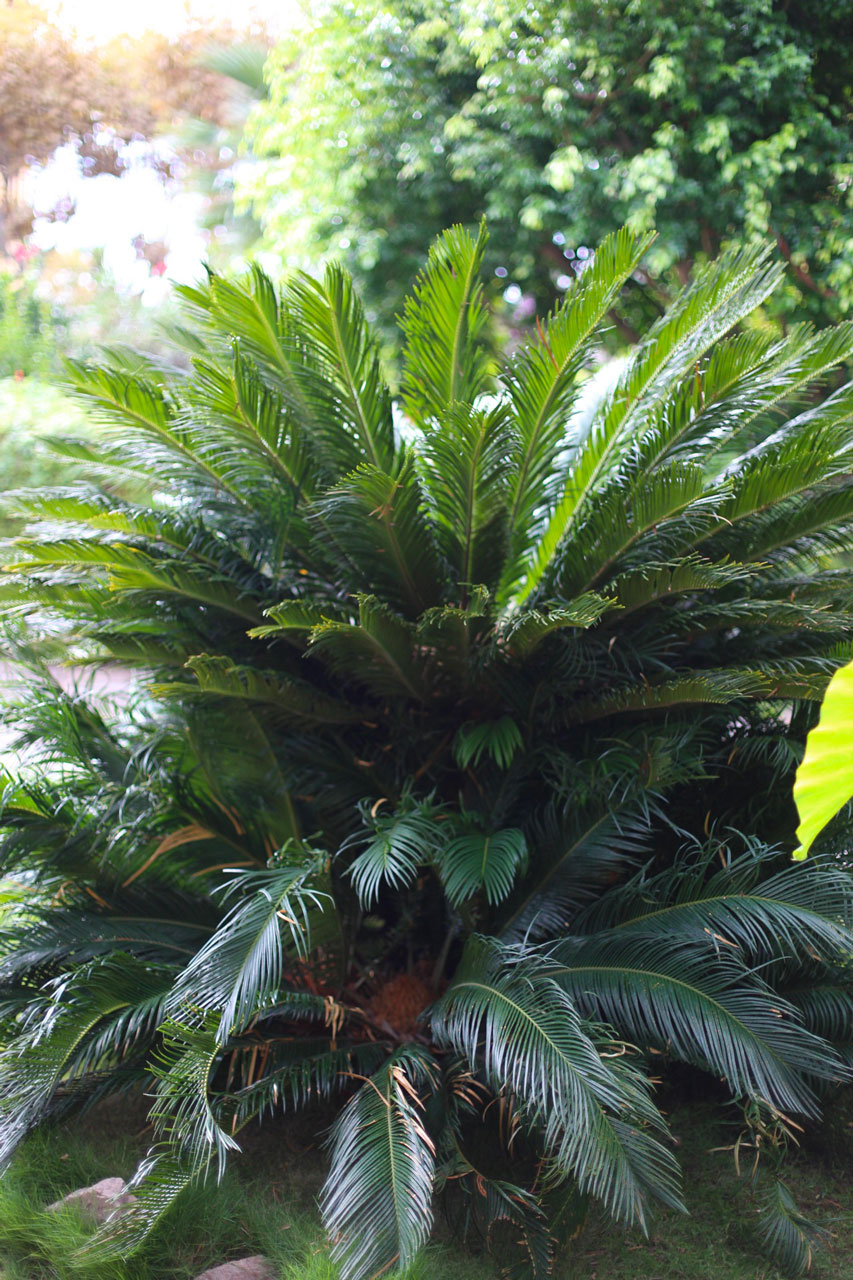
Sago palm
Cycas revoluta
Its name “Cycas revoluta” comes from the Greek “kukas” which was the name given to an undefined palm (by the by, Cycas are not palms) by the Greek philosopher Theophrastus. Its specific name “revoluta” or “revolutus” comes from the Latin for to roll back, referring to the crook-shaped growth of all the new leaves.
- Common name: Sago palm
- Corsican name: Cicassu giappunesi
- French name: Sagou du Japon, Sagoutier
Notes
Toxic seeds. From a botanical point of view, Cycas are an intermediate between a fern and a palm tree, they are also often called fern palms.
Species characteristics
Family: Cycadaceae
Origin: Endemic to southern Japan, Australia, the Pacific Islands, east Africa and Madagascar.
Habitat: Tropical and sub-tropical forests.
Characteristics: Evergreen tapered leaves with thorny tips. It has an erect habit, with a tufted crown, compact and flared.
A dioecious shrub that can reach a height of 2 to 5 metres, it reaches its maximum size after 10 years.
Its flowers, carried by female plants, form a rosette of “leaves” with hairy caps provided at the base with fluffy ovaries. Males produce cones or strobilus whose lower scales have pollen sacs.
Flowering period: Flowers very rarely, except on very old specimens.
Uses and properties: Grown in parks and gardens, in flats, or as bonsai.
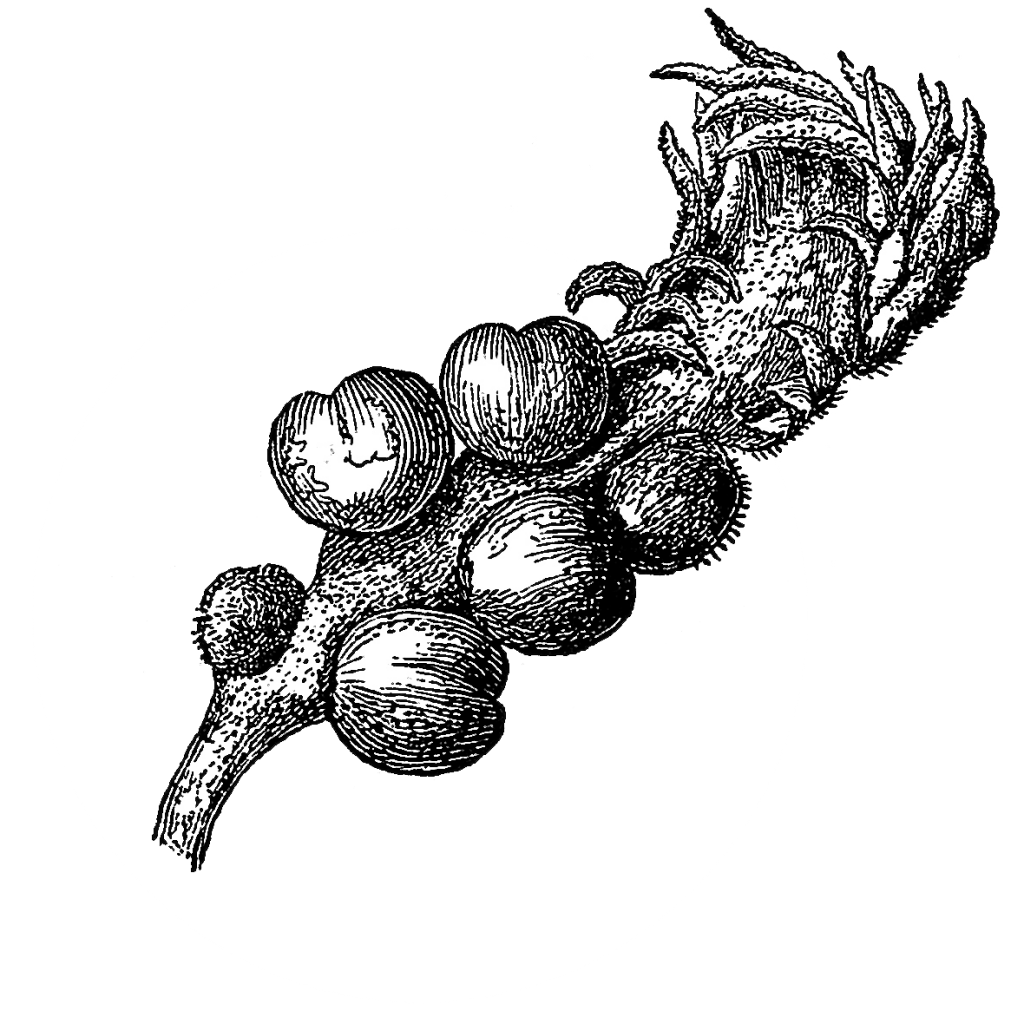
History and oddities
A shrub that still has the characteristics of some fossil plants.

